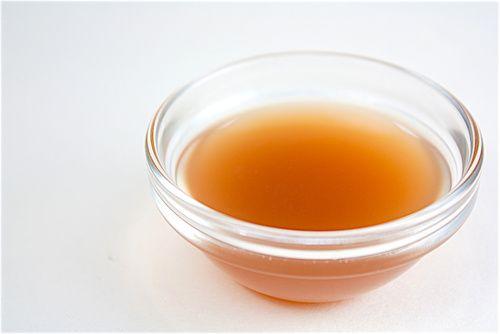- What is vinegar
- Calories and nutritional values
- Property
- Controindicazioni
- Types of vinegar
- Raw material and vinegar
What is vinegar?
THEvinegar it is an acid liquid that is obtained by fermentation by bacteria of the genus Acetobacter, which, in the presence of air and water, oxidize the ethanol contained in the wine, transforming it into acetic acid.

Calories and nutritional values
Thanks to reduced energy intake, vinegar can be freely consumed as a condiment, even in case of overweight or obesity.
In 100 ml of vinegar, We find:
• 14 kcal;
• 0 g of fat and saturated fat;
• 0,6 g of carbohydrates and soluble sugars;
• 0 g of fiber.
Properties of vinegar
Thanks to the presence of acetic acid, vinegar promotes better blood sugar control and blood pressure.
It also slows down gastric emptying, contributing to the sense of satiety. For this reason, it can help you consume moderate portions of food, reducing calorie intake and promoting weight loss.
Finally, the vinegar boasts antimicrobial propertiesin fact, it is also used for the preservation of some foods.
Controindicazioni
È not recommended for people with diabetes or hypertension, as it could have an additive effect, when combined with the pharmacological treatment of such pathologies.
Moreover, it is to avoid in case of gastroesophageal reflux e gastritis, as it could exacerbate the symptoms.
Different types of vinegar
According to the el paesena legislation, it is divided into five categories:
- Common vinegar: produced with non-precious wine by rapid fermentation, clarified and filtered;
- Quality vinegar: produced with fine wine, by slow fermentation and subsequent aging in wooden barrels;
- Flavored vinegar: produced with quality vinegar to which aromatic herbs are added;
- Discolored vinegar: bleached common vinegar, intended for the food industry for the preservation of pickled vegetables;
- Special vinegar: identifies several special types of vinegar, including the balsamic vinegar of Modena.
Raw material and vinegar
Furthermore, in addition to wine, vinegar can derive from the fermentation of different raw materials. Based on the origin, we distinguish:
- Beer vinegar;
- apple vinegar;
- rice vinegar;
- honey vinegar;
- barley malt vinegar.
Purposes
Vinegar can be used as a condiment to flavor your dishes, such as salads or main courses, especially if grilled.
Also, vinegar is also ideal for marinating of meat and fish.
To take advantage of the antiglycemic and satiating properties vinegar, you can prepare a drink to be consumed before a meal by adding a tablespoon of vinegar for each glass of water. In this case, it is preferable to use apple cider vinegar, which has a more delicate taste.
Bibliography and sources
The Antibacterial Activity of Acetic Acid against Biofilm-Producing Pathogens of Relevance to Burns Patients, PLOS ONE
Acetic acid treatment of pseudomonal wound infections – A review, Journal of Infection and Public Health
Functional Properties of Vinegar, Journal of Food Science
Is Vinegar an Effective Treatment for Glycemic Control or Weight Loss?, Journal of the Academy of Nutrition and Dietetics
The role of acetic acid on glucose uptake and blood flow rates in the skeletal muscle in humans with impaired glucose tolerance, european journal of clinical nutrition
Vinegar consumption can attenuate postprandial glucose and insulin responses; a systematic review and meta-analysis of clinical trials, Diabetes Research and Clinical Practise
BDA


























